Gooseberry 'Greenfinch' Ribes uva-crispa 'Greenfinch' (C)

ABOUT
A compact bush which produces green fruits and that has some resistance to mildew and leaf spot. It crops mid season and is similar to 'Careless'. A good culinary variety
About this plant
 Names
NamesFamily
Grossulariaceae
Synonyms
Gooseberry, European Gooseberry, Garden Gooseberry
Common names
Ribes grossularia, Ribes uva-crispa, Grossularia reclinata, Grossularia uva-crispa.
 Characteristics
CharacteristicsLife cycle
Perennials
Foliage type
Deciduous
Color of leaves
Green
Flower color
Greenish-yellow
Height
3-5 feet (0.9-1.5 meters)
Spread
3-5 feet (0.9-1.5 meters)
Plant type
Shrub
Hardiness zones
5
Native area
Europe
Benefits
 General Benefits
General Benefits- Edible Fruit: Ribes uva-crispa 'Greenfinch', commonly known as Gooseberry 'Greenfinch', produces tart berries that are edible and can be used in a variety of culinary dishes such as pies, jams, and desserts.
- Wildlife Attraction: The plant provides a food source for birds and other wildlife, which can help support local biodiversity.
- Garden Aesthetics: With its attractive green foliage and bright fruit, Gooseberry 'Greenfinch' can add aesthetic value to gardens and landscapes.
- Pollinator-Friendly: The flowers of the Gooseberry 'Greenfinch' attract bees and other pollinators, thereby supporting the ecosystem's health.
- Easy to Grow: This particular variety of gooseberry is known for being hardy and relatively easy to grow in a range of climates and soil types.
- Compact Growth: The 'Greenfinch' cultivar is compact in size, making it suitable for smaller gardens or spaces.
 Medical Properties
Medical Properties- Antioxidant: Gooseberries can be a source of vitamin C and other antioxidants, which help in protecting the body from oxidative stress.
- Anti-inflammatory: The plant may have anti-inflammatory properties useful in reducing swelling and pain.
- Diuretic: Traditional uses suggest that gooseberries could aid in increasing the production of urine, helping in detoxification and kidney function.
- Immunomodulatory: Gooseberry extracts might influence immune system regulation.
- Gastrointestinal Health: Gooseberries are sometimes used to support digestive health, possibly aiding in conditions like gastritis or ulcers.
 Air-purifying Qualities
Air-purifying QualitiesThis plant is not specifically known for air purifying qualities.
 Other Uses
Other Uses- The fruit of Greenfinch gooseberry can serve as a natural dye for fabrics, giving them a gentle greenish-yellow hue.
- Gooseberry leaves can be used as a natural additive in compost to enrich the soil with organic matter.
- Bird enthusiasts may plant Greenfinch gooseberry bushes to attract birds, as they enjoy the berries and provide natural bird watching opportunities.
- The thorny branches of the gooseberry bush can act as a natural deterrent, creating a barrier against pests and animals when planted around the perimeter of a garden.
- Branches of the gooseberry plant can be woven into wreaths and other decorative crafts due to their flexibility and durability.
- The Greenfinch gooseberry plant can be trained to grow as a bonsai, making it a unique addition to miniature gardening.
- During the winter, the gooseberry's branching pattern and frosted berries can provide visual interest in an otherwise dormant garden.
- Greenfinch gooseberry can be used in ornamental floral arrangements, especially when the plant is fruiting, to add a natural, edible element.
- As a plant with moderate water needs, the Greenfinch gooseberry can play a role in sustainable gardening practices and xeriscaping.
- In certain cultures, the branches of gooseberry bushes are used in traditional handcrafts, like basket weaving.
Interesting Facts
 Feng Shui
Feng ShuiThe Gooseberry is not used in Feng Shui practice.
 Zodiac Sign Compitability
Zodiac Sign CompitabilityThe Gooseberry is not used in astrology practice.
 Plant Symbolism
Plant Symbolism- Foresight: The green fruit of the gooseberry can symbolize the ability to foresee or plan for the future, as it takes patience and care to cultivate the bushes and wait for the fruit to ripen.
- Patience: Gooseberries take time to mature, and their cultivation can represent the virtue of patience in waiting for something good to come to fruition.
- Protection: The thorny nature of some gooseberry bushes can symbolize protection, as the thorns guard the plants against predators, much like we protect what is valuable to us.
 Water
WaterThe Gooseberry 'Greenfinch' should be watered thoroughly, allowing the soil to become moist but not waterlogged. During its growing season, in spring and summer, water the plant every week with approximately 1 to 2 gallons, depending on the size of the plant and weather conditions. Reduce watering in the fall and further in winter to every 2-3 weeks, providing just enough water to prevent the soil from completely drying out. It's essential to avoid overwatering, which can lead to root rot, so always check the soil moisture before watering.
 Light
LightGooseberry 'Greenfinch' thrives best in full sun to partial shade. A spot that receives at least 4-6 hours of sunlight per day is ideal. Ensure it is protected from the intense afternoon sun in hotter climates to prevent leaf scorch. The plant can also tolerate dappled sunlight, which makes it versatile for planting in slightly shaded areas as well.
 Temperature
TemperatureGooseberry 'Greenfinch' is hardy and can withstand winter temperatures down to about -40 degrees Fahrenheit, but it grows best when summer temperatures range between 65 and 75 degrees Fahrenheit. During the growing season, ensure the plant is not exposed to extreme heat above 85 degrees Fahrenheit for optimal growth.
 Pruning
PruningPrune Gooseberry 'Greenfinch' during the dormant season, ideally in late winter or early spring, to maintain the plant's shape and encourage healthy fruit production. Remove any dead, diseased, or crossing branches and thin out older wood to increase sunlight exposure and air circulation. This annual pruning also helps to reduce disease pressure and pest infestations.
 Cleaning
CleaningAs needed
 Soil
SoilGooseberry 'Greenfinch' prefers a well-drained soil rich in organic matter with a pH between 6.0 and 6.5. A good mix would be garden loam, peat, and compost at a ratio of 2:1:1 to ensure fertility and proper drainage.
 Repotting
RepottingGooseberries like 'Greenfinch' do not need frequent repotting and can typically be done every 2-3 years. They're often planted directly in the ground but if potted, ensure a gradual increase in pot size.
 Humidity & Misting
Humidity & MistingGooseberry 'Greenfinch' is tolerant of a wide range of humidity levels but prefers a moderate level. It thrives outdoors where it can receive natural atmospheric moisture rather than in controlled indoor environments.
 Suitable locations
Suitable locationsIndoor
Place in a sunny spot, water regularly.
Outdoor
Full sun, sheltered spot, well-drained soil.
Hardiness zone
4-7 USDA
 Life cycle
Life cycleThe life cycle of Ribes uva-crispa 'Greenfinch', commonly known as the Greenfinch gooseberry, begins when seeds germinate in the spring, with optimal germination occurring in a cold, moist environment. The emerging seedlings grow into spiny, deciduous shrubs that can reach approximately 1-3 feet in height, with three-lobed, sharply toothed leaves. During the plant's second year, flower buds develop that will bloom into small, bell-shaped flowers in groups of one to three, typically in mid-spring. Following pollination, often by insects, the flowers give way to green berries that mature typically around July in the Northern Hemisphere. The mature gooseberries can be harvested when they are plump and have a translucent green color. After fruiting, the plant will enter a period of dormancy during the colder months before the cycle recommences with new growth in the following spring.
 Propogation
PropogationPropogation time
Late winter to early spring
The most popular method of propagating the Gooseberry 'Greenfinch' is by taking hardwood cuttings. This practice is best carried out in the fall after leaf drop or in late winter before new growth begins. To propagate by this method, select healthy one-year-old shoots and cut them into lengths of 6 to 8 inches (about 15 to 20 centimeters) using sharp, clean pruning tools. Plant the cuttings in a well-drained propagating mix or directly into the ground, leaving only a couple of buds above the soil surface. Keep the soil moist until the cuttings root, which typically takes several months. Once the cuttings have established a good root system, they can be transplanted to their final growing location. This simple and effective technique allows for a relatively easy and cost-effective way to produce new plants.
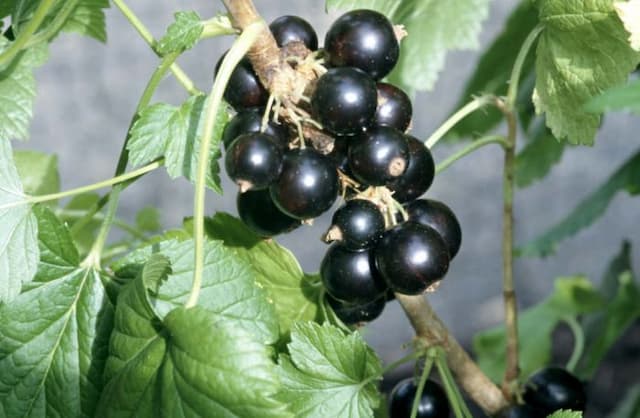
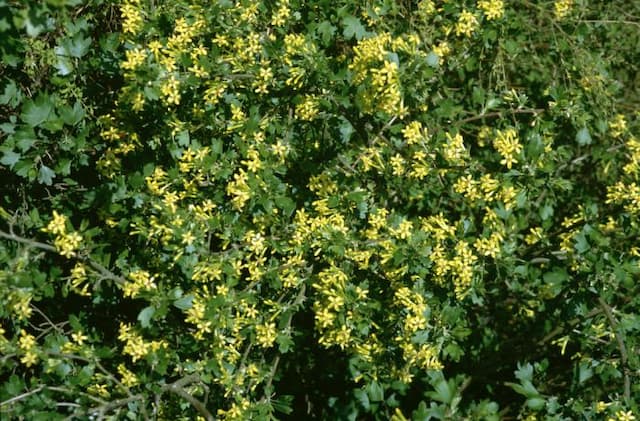

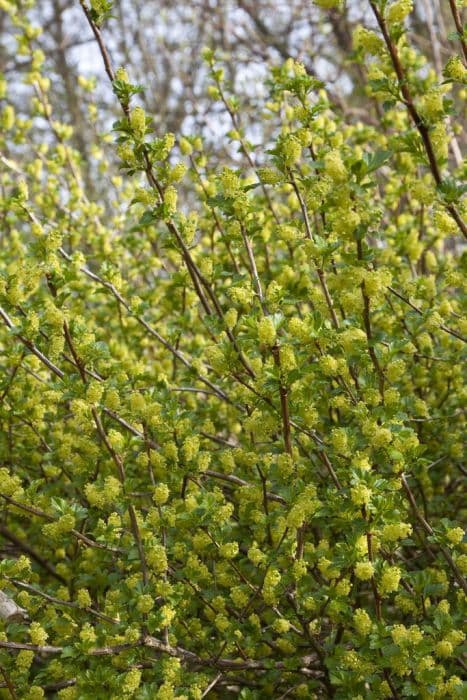

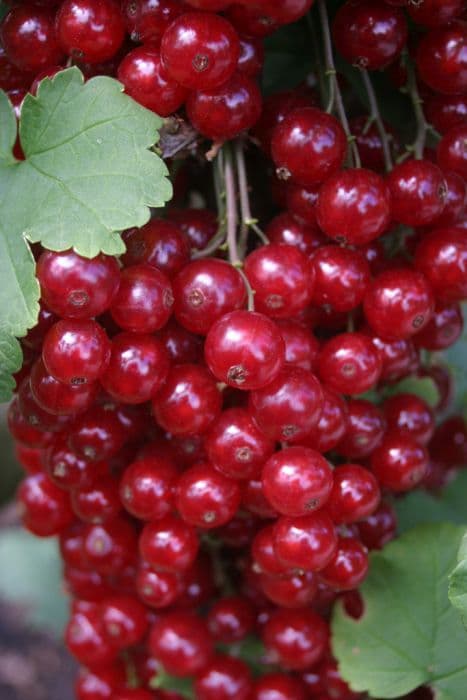
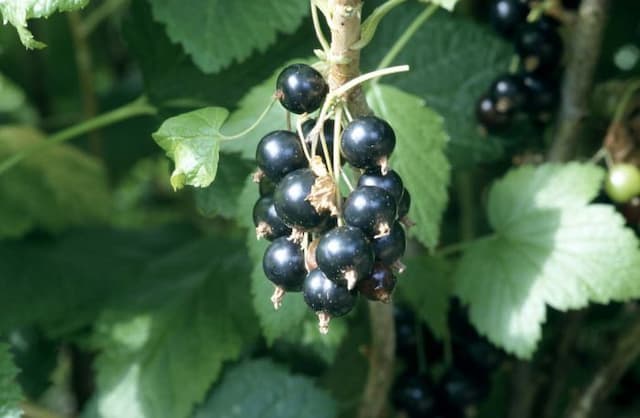
![Flowering currant [White Icicle]](/_next/image?url=https%3A%2F%2Fplants-admin.emdemapps.com%2Fimages%2Fplants%2F%2Fimages%2F604b5fe15ab5b.png&w=640&q=75)

